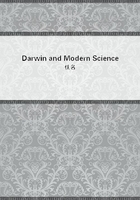
第224章
The case of Primula is now well known. C.K. Sprengel and others were familiar with the remarkable fact that different individuals of the European species of Primula bear differently constructed flowers; some plants possess flowers in which the styles project beyond the stamens attached to the corolla-tube (long-styled form), while in others the stamens are inserted above the stigma which is borne on a short style (short-styled form). It has been shown by Breitenbach that both forms of flower may occur on the same plant, though this happens very rarely. An analogous case is occasionally met with in hybrids, which bear flowers of different colour on the same plant (e.g. Dianthus caryophyllus). Darwin showed that the external differences are correlated with others in the structure of the stigma and in the nature of the pollen. The long-styled flowers have a spherical stigma provided with large stigmatic papillae; the pollen grains are oblong and smaller than those of the short-styled flowers. The number of the seeds produced is smaller and the ovules larger, probably also fewer in number. The short-styled flowers have a smooth compressed stigma and a corolla of somewhat different form; they produce a greater number of seeds.
These different forms of flowers were regarded as merely a case of variation, until Darwin showed "that these heterostyled plants are adapted for reciprocal fertilisation; so that the two or three forms, though all are hermaphrodites, are related to one another almost like the males and females of ordinary unisexual animals." ("Forms of Flowers" (1st edition), page 2.) We have here an example of hermaphrodite flowers which are sexually different. There are essential differences in the manner in which fertilisation occurs. This may be effected in four different ways; there are two legitimate and two illegitimate types of fertilisation. The fertilisation is legitimate if pollen from the long-styled flowers reaches the stigma of the short-styled form or if pollen of the short-styled flowers is brought to the stigma of the long-styled flower, that is the organs of the same length of the two different kinds of flower react on one another. Illegitimate fertilisation is represented by the two kinds of self-fertilisation, also by cross-fertilisation, in which the pollen of the long-styled form reaches the stigma of the same type of flower and, similarly, by cross-pollination in the case of the short-styled flowers.
The applicability of the terms legitimate and illegitimate depends, on the one hand, upon the fact that insects which visit the different forms of flowers pollinate them in the manner suggested; the pollen of the short-styled flowers adhere to that part of the insect's body which touches the stigma of the long-styled flower and vice versa. On the other hand, it is based also on the fact that experiment shows that artificial pollination produces a very different result according as this is legitimate or illegitimate; only the legitimate union ensures complete fertility, the plants thus produced being stronger than those which are produced illegitimately.
If we take 100 as the number of flowers which produce seeds as the result of legitimate fertilisation, we obtain the following numbers from illegitimate fertilisation: